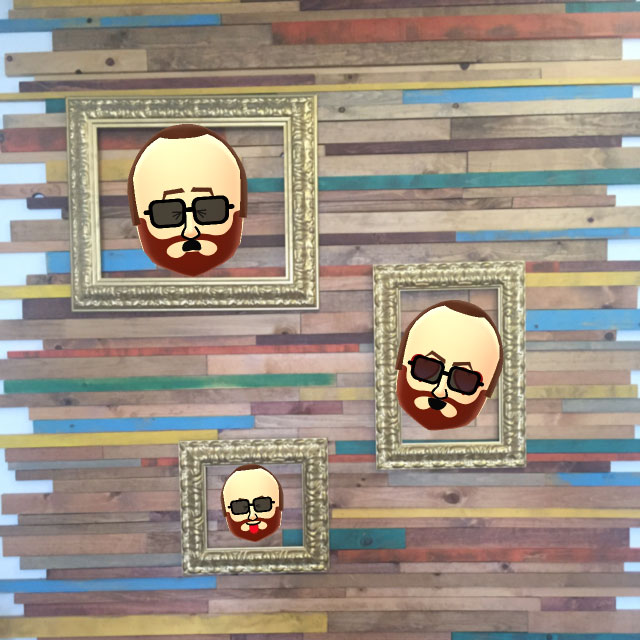The app allows users to create and customize digitized versions of themselves called Mii, which they can dress up and share with friends by interacting with each other in-app, or sharing photos of them on other social networks. The app approximates the features and “gameplay” of a social network, but never approaches the utility of apps like Facebook or Twitter for sharing information. It winds up falling somewhere between personalized smartphone icon maker Bitmoji, and a pre-VR virtual life simulator, such as Second Life.
Users start out by creating their Mii, a cartoonish avatar with an extremely large head. People who have owned a Nintendo Wii (or Wii U) may recognize Miis — Nintendo’s recent consoles have used the avatars to represent specific accounts, and easily allow players to insert themselves into games such as Wii Sports. Miitomo requires new users to make a new Mii, even if they already have one associated with a connected Nintendo Account from the game-maker’s devices.
Related Offer: Get Miitomo on iTunes App store here
Creating a character can be as simple or complex as you want it to be: the app can use your phone’s camera to scan a face and generate as many Mii-style renditions of it as the user wants. If one version seems close, but not quite right, they can tweak individual features until it suits their liking. If they prefer, users can simply build their Mii from scratch instead.
Faux-cial Network
After creating a Mii, the app opens up into an asynchronous faux social network. The core of the experience is answering and updating questions about yourself, which earns you coins to spend on clothes for your Mii at the Miitomo shop. You can also, of course, buy coins with real money. You can find friends through existing connections on Facebook and Twitter, scanning user QR codes, or connecting in person via NFC.
Users start out by creating their Mii, a cartoonish avatar with an extremely large head.
Once you’re connected, you can visit any friend at any time and “chat” by exchanging pre-written responses to questions posed by the app. The questions range from the mundane, “What was your most recent purchase?” to the somewhat surreal, “Imagine Flowers Blooming in Your Mind’s Eye. How many flowers do you see?”
Even when the questions feel normal, the experience can seem a bit odd. Rather than simply sharing them as text, friends’ Miis literally stand in a room and make small talk. When you answer a question, the Mii will read it back to you in a customizable, but universally robotic text-to-speech voice.
Technically, you can start a chat by commenting on each other’s answers, but, by design there’s no easy means for direct communication. Whether you’re pre-answering questions by yourself or getting them through “conversations” with friends, users don’t ask questions; they only answer them. One could argue that Miitomo serves as an extremely complex “away message,” similar to a chat app like Google Hangouts. If updated regularly, users can share and exchange the details of their daily lives with each other without ever connecting directly.
There is at least one other way to pass the time and earn coins. Some achievements, such as answering a certain number of daily questions or checking the app every day, can earn players game tickets, which can be used to play a Pachinko-style game called “Miitomo Drop.”
If you get into the customization features and buying new outfits, you may feel compelled to “grind” through people’s answers for more money. As with many free-to-play apps, the initial surge of gold runs out before you know it and, at five coins for listening to an answer, it will take weeks to earn the 1,000+ coins often needed to purchase a snazzy new shirt or pair of pants.
Strike a Pose
Miitomo’s most compelling functionality is in its “Miifoto” feature, which allows users to position and take photos of their Mii. Unlike Bitmoji, wherein users create stylized avatars and apply them into a wide array of icons, Miitomo lets users compose wholly new images by placing and posing their Mii on a preset background, or images from your phone’s camera roll. Aside from different outfits, there are deep customization options for your Mii, from changing his or her expression and pose, to twisting and resizing them in space. It’s possible to make the Miis convincingly appear as though they’re a real part of a photo (within reason).
As interesting and fun as Miifoto can be, the feature — and the whole app — are severely hamstrung by the app’s lack of any dedicated purpose or direct utility in the real world. While it isn’t hard to, for example, post your Mii photos on Instagram, getting to that point requires users to already think to use Miitomo. Meanwhile, Snapchat gives people filters, stickers and plenty of opportunities to get creative baked right into its genuinely useful service. Miitomo is, ultimately, still a toy.
Fun vs. Utility
Miitomo is also, frankly, a demanding app. Between a surprise install after launching it for the first time, and added file size from photos and new Mii outfits, the app can quickly balloon to hundreds of megabites. Similarly, the app is a big battery hog. Anecdotally, my iPhone 6 battery dropped around 40 percent after using it and/or leaving it open for a couple of hours.
For Nintendo’s first attempt at making a compelling smartphone product that does not directly connect back to its own hardware, Miitomo gets a lot right. However, at its core there is a fundamental misunderstanding of what draws phone users to apps: it is not enough to simply make a fun product; it must also have the potential to weasel its way into our daily routine and make us feel like we could never live without it.














